I used to think of the circle-to-land maneuver following an instrument approach as a necessary evil. We had a lot of airports to go to, in good weather and bad, but not enough straight-in instrument approaches. The cost of installing an instrument approach left us with few options, so we learned to deal with it. Dealing with it, meant training and checking in actual aircraft while flying as high as possible (up to traffic pattern altitude) and as wide as possible (up to normal traffic pattern width). I no longer think of circling as a necessary evil. Now I think of it as an unnecessary and unsafe evil which has been made worse by the way we train and check. I can hear about half of you cheering me on and the other half wondering what all the fuss is about. Allow me to explain.
— James Albright

Updated:
2023-01-11
Before I go any further, let me define “unsafe” for those of you in the business of training and checking in simulators. I believe a safe approach requires the aircraft be stable no later than 500 feet above the landing surface. An approach isn’t stable unless the aircraft is wings level, fully configured to land, on speed, on the runway’s extended centerline, and on the specified glide path (usually 3°). Furthermore, you cannot have exceeded 30° of bank on the way to getting there. If you haven’t got all that accomplished by the time you pass 500 feet above the landing surface, you are unstable. And unsafe
1 — Circling before simulators became clever
2 — The classic (and dumb) simulator circling check
3 — Learning to distrust the simulator
4 — If "they" know it is wrong, why do "they" insist on it?
5 — Learning the wrong lessons in the simulator sets you up to fail in the real world
6 — Creatively extending your vision

1
Circling before simulators became clever
Early simulators did a poor job of presenting the airport environment with enough cues to make circling approaches possible, so examiners granted pilots wide latitude. It was almost understood that the turn to the landing runway would be a near-aerobatic maneuver, but so long as we ended on the runway all was forgiven. As simulators got better, the forgiveness became rarer. Lost on those administering the check was the fact it is impossible to fly a stable approach off a circling approach at most published visibility minimums. I’ll illustrate that with several examples, but first let me explain how it is that many pilots somehow make it all work out. There are various techniques, but the earliest was with a stopwatch and what many aviators call “the gouge.”
A classic definition of “gouge” is to extort, and I suppose that is apropos here. We pilots would take copious notes after each failed and successful simulator circle and the word spread throughout: when to turn, what angle to use, how long to time, and so on. “Do you see the runway?” “Absolutely!” As simulators got better, so did cockpit avionics. So the gouge has been replaced with wonderful Situational Awareness (SA) tools, such as airport moving maps and geographically referenced approach charts with accurately placed aircraft symbols.
So we are learning to improve our SA, a good thing. But we are learning the wrong lessons about how to circle. Moreover, we are growing a false sense of confidence that we will be able to circle in the real world as safely as we do in the simulator. There is no better example than the classic simulator circle exercise: The approach to Memphis International Airport (KMEM), Tennessee, Runway 27, circle to Runway 18 Right.
2
The classic (and dumb) simulator circling check
Circling north of Memphis is theoretically easy because there is a huge ramp that offers visual cues, the approach runway displaced a half mile from the landing runway, giving you more distance to displace yourself, and there are two other runways leading up to the runway you want to land on. But even with all these advantages, pilots struggle with it until they memorize the gouge or learn creative ways to extend their vision. (More on that later.)
I last accomplished this in a simulator for a Gulfstream GVII-G500, a Category C aircraft. A typical approach speed for us at normal weights, no wind, would be 130 KTAS. Our turn radius would be 0.53 nautical miles (nm). The Category C visibility minimum for that approach is 1-1/2 statute miles (sm). A sm is 15% less than an nm, and that difference is critical. My technique is to turn 45° north once I spot the runway and then turn to base once I have the correct offset. I am fortunate that my aircraft’s avionics help me out with this. In earlier aircraft, the check airman would light up the ramp to give me the cues I needed.
I was rarely able to do this and roll wings level on final before 500 feet. But the various check airmen almost always ignored stable approach rules, I suppose because they had no choice. I diagrammed the approach and discovered that if flown perfectly, you would roll out 1.5 nm from the touchdown zone. Good job? Almost. A 3° glide path takes 318 ft/nm, so you would roll out at (1.5)(318) = 477 feet, just shy of a stable approach. But that required perfection on your part. How many flight maneuvers require perfection?
Several years ago, I was flying into Memphis on a moonless night, just after midnight. (Note: this was in an actual aircraft, not a simulator.) The normally busy FedEx arrival traffic was already on the ground, and we had the night sky to ourselves. We were cleared for the ILS Runway 27 and the tower reported the winds were 090 / 5 knots, which wasn’t optimal. By the time we got to the glide slope, the winds picked up to 090 / 15. We told tower, “we can’t land with more than ten knots on the tail.” Tower said, “You have the airport to yourselves, circle to the runway of your choice.”
I looked at the right seat pilot and said, “we’ve never been better prepared to circle, anywhere.” But it wasn’t like the simulator at all, we didn’t see any of the ground references or the approach lights to the other runways. We had to beg tower to light everything up before we were able to circle.
Of course, this example, and those to follow, are in a jet flying at 130 KTAS. You may have better luck in a slower aircraft, especially in a lower circling category. But I’ve found these results to be typical of Category C, D, and E aircraft.
Just as I was learning to distrust the Memphis circling procedure in the simulator, our training vendor discovered a way to make it even worse: New York-John F. Kennedy International Airport (KJFK), New York. The approach is to Runway 4L, circle to Runway 31 Right.
3
Learning to distrust the simulator
The simulator circling at KJFK is just like KMEM, only less. While you are given ¼ sm more visibility, you have less offset to the landing runway and fewer visual cues. You end up rolling out 1.25 nm from the end of the runway and that means you will be at (1.25)(318) = 398 feet. Once again, the exercise leaves you unstable at 500 feet.
Most simulator instructors and examiners will grant you a lot of leeway when looking for a stable approach during this maneuver. I am usually left to self-critique. “Another unstable approach into Kennedy,” I typically say after landing. “Why don’t you fly a stable approach, then?” I am asked. I admit that my answer is meant to provoke: “I can fly that maneuver at minimums, or I can fly it stable. But I can’t do both.”
Of course, that sparks a heated debate because it is me accusing the examiner of doing something wrong. (I am doing exactly that.) These debates usually end with the examiner saying his or her hands are tied, because the Federal Aviation Administration (FAA) mandates this kind of training of all Part 142 training centers. I know this is true, but it doesn’t take the training centers off the hook. The FAA gets things wrong all the time and the only way they get them right is if someone like a very large Part 142 training center pushes back.
4
If "they" know it is wrong, why do "they" insist on it?
My company operations manuals doesn't allow our pilots to circle at weather below 1,000' ceiling and 3 miles visibility. But that never does any good at the simulator, the person giving the check says we we have to demonstrate the circle at published minimums even if we can't do that in real life. "Why?" I ask. "They say so." Who is "they?"
Until about 2019, nothing from the Federal Aviation Administration said we pilots have to be checked at minimums. The closest thing I could find was in Part 142. That, of course, begs the questions "What is 142" and who are the "we" they are talking about?
14 CFR 142
This is the FAR that "prescribes the requirements governing the certification and operation of training centers." It is the rules telling our training providers how to do their jobs. But it doesn't get into the details about how to conduct a simulator check ride. For that, you need to look into the FAA Order 8900.1 series, specifically, Volume 3, Chapter 54. So that's where we find out how "they" are told how do to a circling approach check. Right? Not exactly. It tells the training centers that the Training Center Examiner (TCE) — the person giving you the check — that the TCE must be evaluated at published minimums if that TCE will be evaluating circling approaches at published minimums. Specifically:
In order for the TCE to remain qualified to instruct/evaluate circling approaches, at published minimums, the TCE must be evaluated accomplishing the circling maneuver at published minimums during his/her proficiency check.
Source: [FAA Order 8900.1, Volume 3, Chapter 54,¶3-4355.C.3)a)3.
So the TCE has to be checked at published minimums. What about we, their customers, the pilots the regulations call "the applicant," what about us? To find the answer, "we" pilots had to look at what used to be called the PTS, practical test standards. And it had nothing to say about it other than that we have to "execute a circling approach at night or with marginal visibility." But it didn't define "marginal visibility." Just trying to be helpful, I brought this up every six months and the argument always ended with, "I don't know, they tell me to check you at minimums and that's what I'm going to do."
Airline Transport Pilot (ATP) and Type Rating for Airplane Airman Certification Standards (ACS)
All of this changed when the PTS was replaced with the ACS around 2019. The ATP ACS provides the standards we as pilots at our level must demonstrate to pass a check ride. Among the standards listed in Section VI.G., Circling Approach:
Skills — The applicant demonstrates the ability to:
Comply with the circling approach procedure considering turbulence, windshear, and the maneuvering capability and approach category of the aircraft.
Confirm the direction of traffic and adhere to all restrictions and instructions issued by ATC or the evaluator.
Coordinate with crew, if applicable, and complete the appropriate checklist(s) in a timely manner.
Establish the approach and landing configuration. Maintain a stabilized approach and a descent rate that ensures arrival at the MDA, or the preselected circling altitude above the MDA, prior to the missed approach point.
Maintain airspeed ±5 knots, desired heading/track ±5°, and altitude +100/-0 feet until descending below the MDA or the preselected circling altitude above the MDA.
Visually maneuver to a base or downwind leg appropriate for the landing runway and environmental conditions.
If a missed approach occurs, turn in the appropriate direction using the correct procedure and appropriately configure the airplane.
Source: FAA-S-AS-11, Task G, Circling Approach, p. 48
So, for the first time, the feds are saying you must be checked at the MDA when applying for an ATC or type rating. Note also that they also require you maintain a stabilize approach.
Skills — The applicant demonstrates the ability to:
Keep the airport environment in sight and remain within the circling approach radius applicable to the approach category to a position from which a stabilized descent to landing can be made.
Make smooth, timely, and correct control application throughout the circling maneuver and maintain appropriate airspeed, ±5 knots. If applicable, maintain altitude +100/−0 feet, and desired heading/track, ±5°.
Source: FAA-S-AS-11, Task H, Landing from a Circling Approach, p. 49
Now, also for the first time, we are also told we must remain within the required radius. Left unsaid is any requirement to do this on a recurrent check after you already possess an ATP and the relevant type rating. Also unsaid is any requirement to do this at published minimums, which is only required of the TCE, not us pilots getting the check. What about my insistence that our company forbids circling below a higher minimum?
A pilot may receive a circle-to-land limitation through an approved air carrier training and checking program restricting a circling approach in the specified airplane type to visual meteorological conditions (VMC) only. An example of the certificate notation would be: “CL-65 CIRC APCH VMC ONLY.” This restriction may be removed when the applicant receives training in the circling maneuver in the same type of airplane for which he or she has the limitation and satisfactorily demonstrates a circling approach and landing in that same airplane type with an appropriately qualified evaluator.
Source: FAA-S-AS-11, Appendix 5, Circle-to-Land Limitation on an ATP Certificate or Type Rating
The approach and landing scenario must include visual maneuvering from the final approach course to a base or downwind leg, as appropriate, for the landing runway. The applicant may circle to land on a runway that is less than 90-degrees offset from the final approach course provided the applicant makes at least 90 degrees of total heading change(s).
Source: FAA-S-AS-11, Appendix 7
"They" and the problem with "their" requirements
The FAA says ATP and type rating applicants must demonstrate circling at the MDA and within approach category radii, but does not specify the weather minimums. It does not specify this for pilots who already have an ATP and the pertinent type rating.
The training centers say their hands are tied by Part 142, which as we've seen do not tie their hands at all.
So what's the big deal? As we've already seen, you cannot fly a circling approach at the most common simulator airport choices (KMEM and KJFK) at published visibility. minimums and end up with a stabilized final approach. But isn't it good to be trained to a higher standard in the simulator than what you can expect in real life? If you can do it at John F. Kennedy / New York International Airport, surely you can do it at a small airfield. Right?
5
Learning the wrong lessons in the simulator sets you up to fail in the real world
You might think the odds are stacked against us at a major international airport with multiple runways, but they are actually improved. These airports have full approach lighting systems that make keeping sight of the airport easier. Ironically, you will almost never have to circle at one of these airports, since they tend to have approaches to each runway. Where things become really hazardous is where you have just one, short runway.
I used to be based at Boire Field (KASH), New Hampshire, where the choices for the single runway were the ILS Runway 14 or the VOR Runway 32. If the ILS was down, our best option was said to be the VOR Runway 32, circle to Runway 14 with 2 sm minimum visibility. After flying simulated circling approaches with less visibility, I thought this would be easy. It was not: it left us rolling out just 1.2 nm from the touch down zone. That comes to (1.2)(318) = 382 feet. The runway has since been lengthened, but back then it was 5,500 feet long. We learned that given the choice of circling at minimums and landing someplace else, the someplace else was always a better option.
6
Creatively extending your vision
Is this problem going to get better anytime soon? I doubt it. As disingenuous as the system is, we pilots are even more ingenious at finding ways to “creatively” extend our vision and our success in flying the unflyable.
Many aircraft, like mine, offer very good map displays of the runway environment with the aircraft’s position drawn in real time. We can size the display to draw a 2 nm circle around the aircraft as well as 2 nm “feathers” which depict localizer beams off any runways with an ILS approach. We are encouraged to do this as a way of improving our SA.
I’ve seen more than a few pilots struggle with the KMEM Runway 27 circle to Runway 18 Right and then be given helpful hints on how to use this technology to improve their odds. We are told to place that circle over the ILS Feather to Runway 27. Yes, that keeps you within 2 nm of the airport environment. But 2 nm converts to 2.3 sm and our visibility minimum is 1.5 sm. Somebody is cheating: either the pilot doesn’t really see the airport, or the examiner has fudged with the visibility. No matter who is fudging, we pilots are taught we can safely circle at our visibility minimums. I contend that we cannot.
7
Solving the circling conundrum
I often wonder about the fact we use statute miles for visibility and nautical miles for everything else. Let’s say in our small airport example we insisted on our visibility minimums using the same numerical value, but in nautical miles. Would that extra 15% solve things? Yes, it appears it would. Being able to begin our offset earlier and fly a wide base turn allows us to roll out 1.58 nm from touchdown. That means we will be at (1.58)(318) = 502 feet. Again, that requires perfection from imperfect pilots. So this is hardly the solution to what ails us. But there are two solutions available.
8
Two possible solutions
Solution one . . .
. . . raise the visibility minimums. We are told repeatedly that “Circling is a VFR maneuver.” In my flight department, we require at least 1,000 feet ceiling and 3 sm visibility for circling. If we don’t have that, we look for another place to land.
Solution two . . .
. . . technology. We often fly to Dekalb-Peachtree Airport (KPDK), Georgia, where there are several instrument approaches available for landing on Runway 21 Left. As of the day I am writing this, we do not have our Letter of Authorization (LOA) to use the only approach available for the opposite runway, the RNAV(RNP) Runway 3 Right. (We applied more than six months ago.) We are fully trained and our aircraft is fully capable. The RNAV(RNP) has turned circling, a very unsafe maneuver, into one of the easiest in the book. And easy means safe.
If the dangers of circling are as I’ve outlined them here . . .
. . . why do they persist? I believe they continue at many airports because they are an easy way of offloading the problems of air traffic control onto the pilot. ATC will continue to use circling approaches if we pilots continue to accept them. We pilots will continue to accept them because our training tells us it is safe to do so. The approach visibility minimums have the FAA’s stamp of approval, after all! But keep in mind you can say the same thing about the once ubiquitous NDB approach.
Most of the airports I use have long ago decommissioned their Non-Directional Beacon (NDB) approaches and to that I long ago said, “Good Riddance.” I think few will argue that an NDB approach can be deadly. Now that we’ve slayed that dragon, it is time to aim for the next. I am hoping for the day circling approaches will be as rare as those awful NDB approaches. And on that day, I will say good riddance.
References
(Source material)
FAA Order 8900.1
Airline Transport Pilot and Type Rating for Airplane Airman Certification Standards, FAA-S-ACS-11, June 2019.

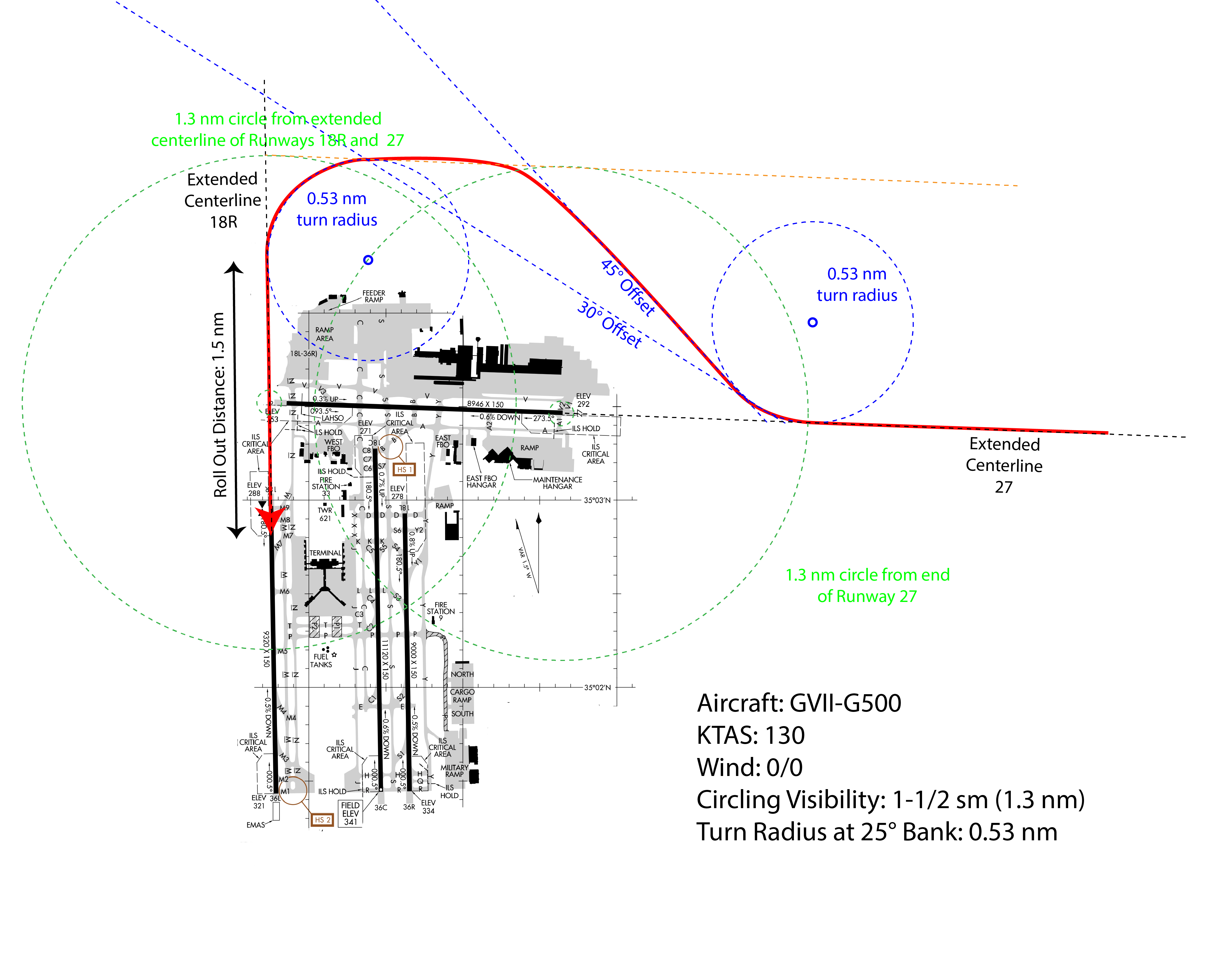
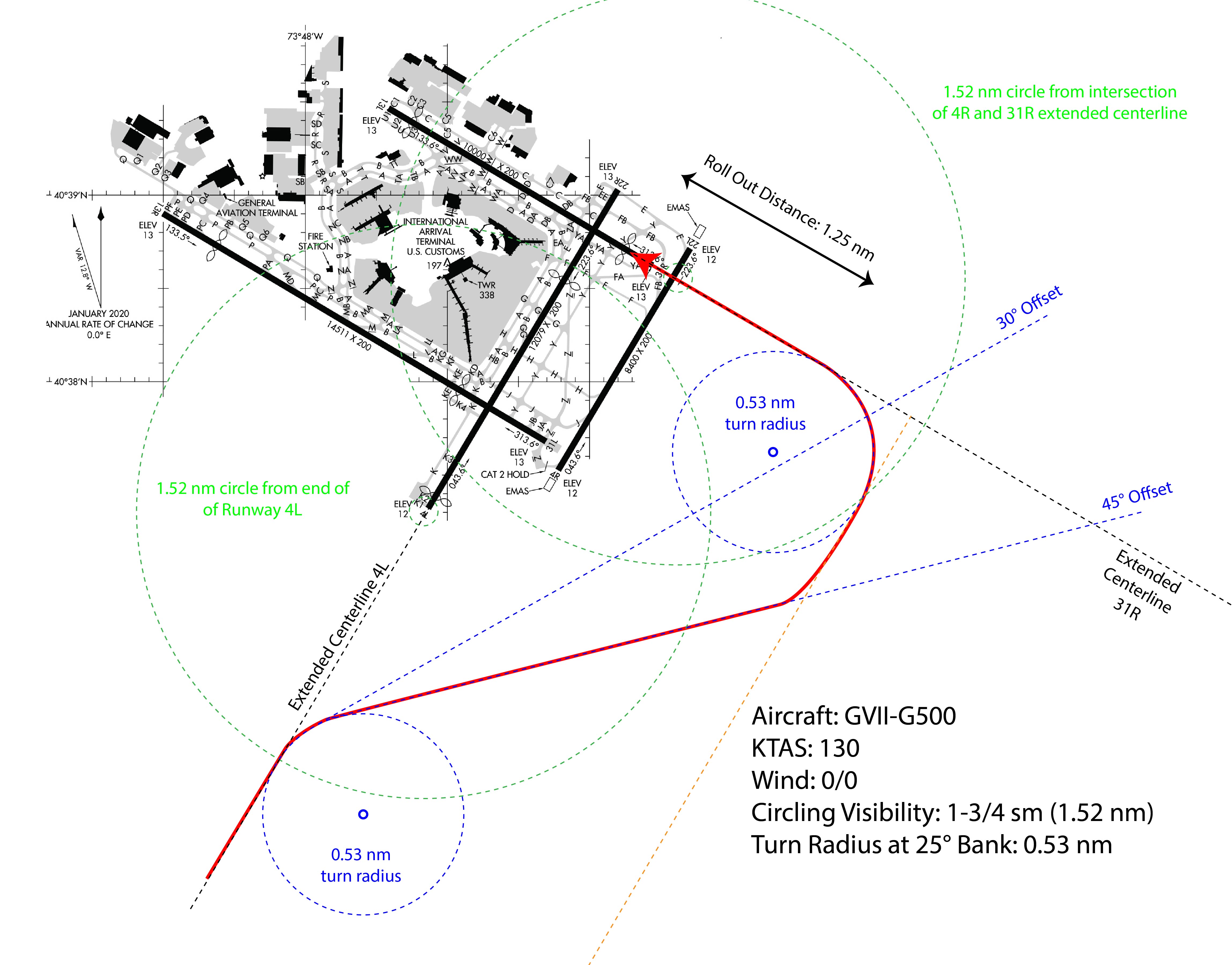
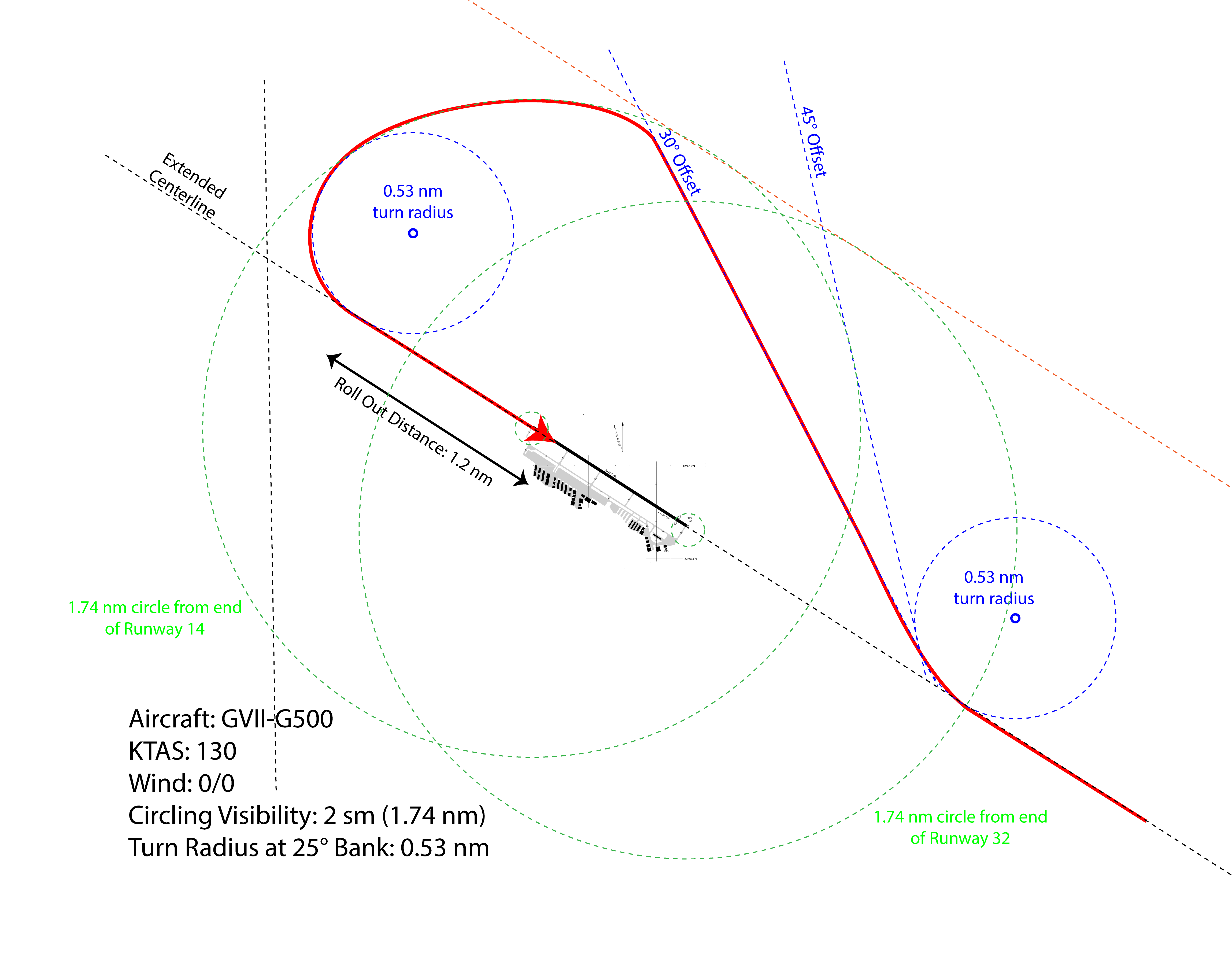
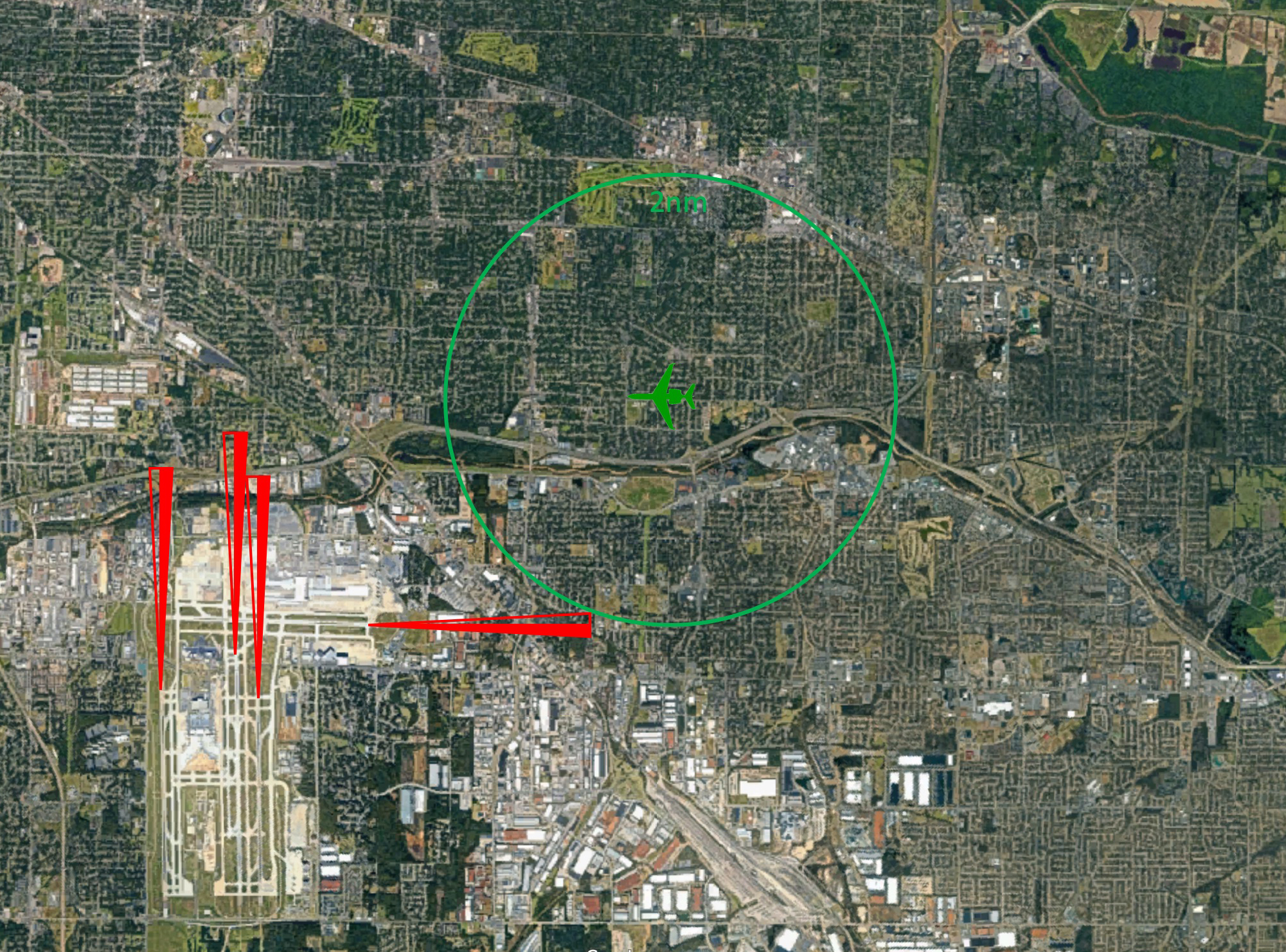
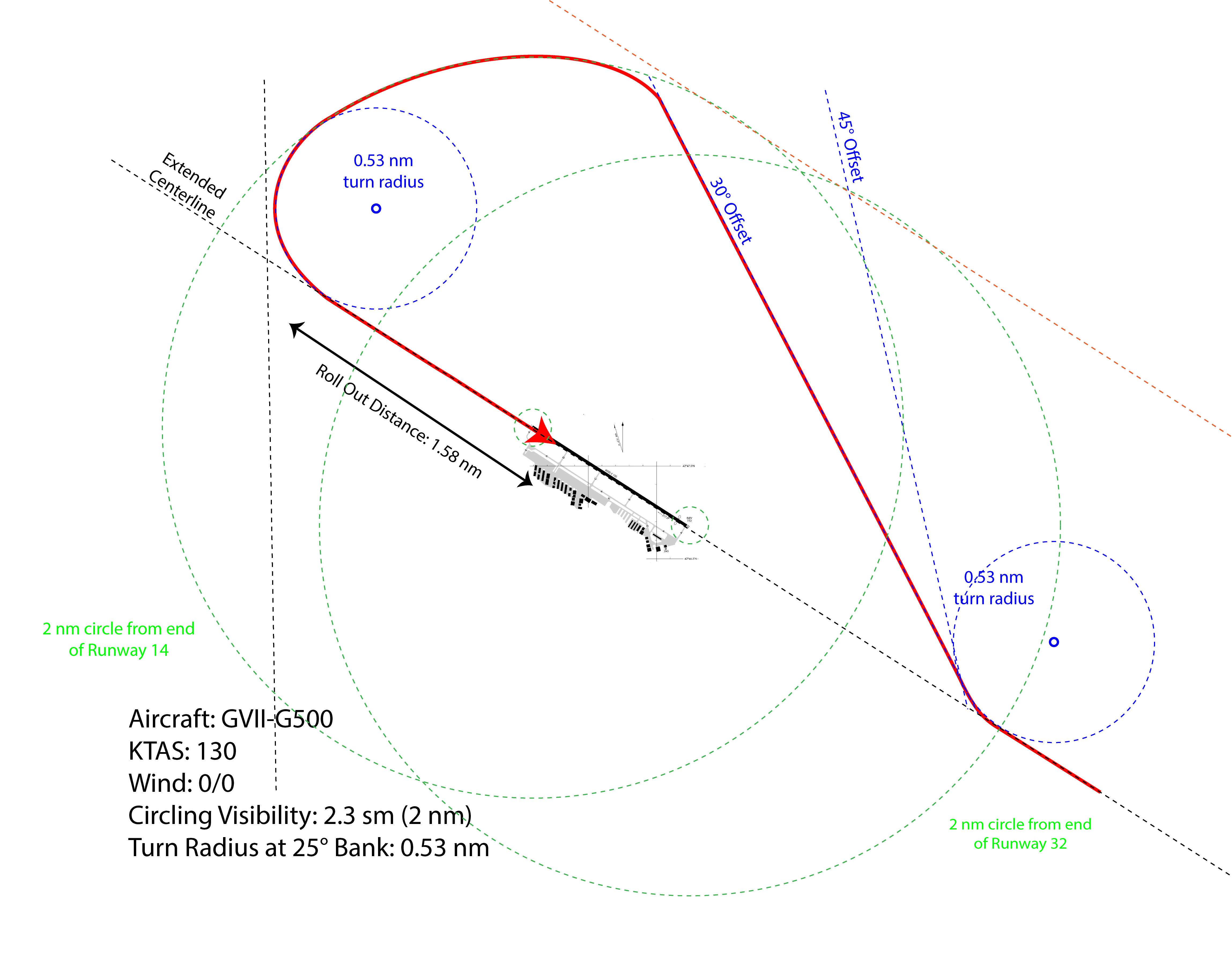
_rwy_3r.jpg)